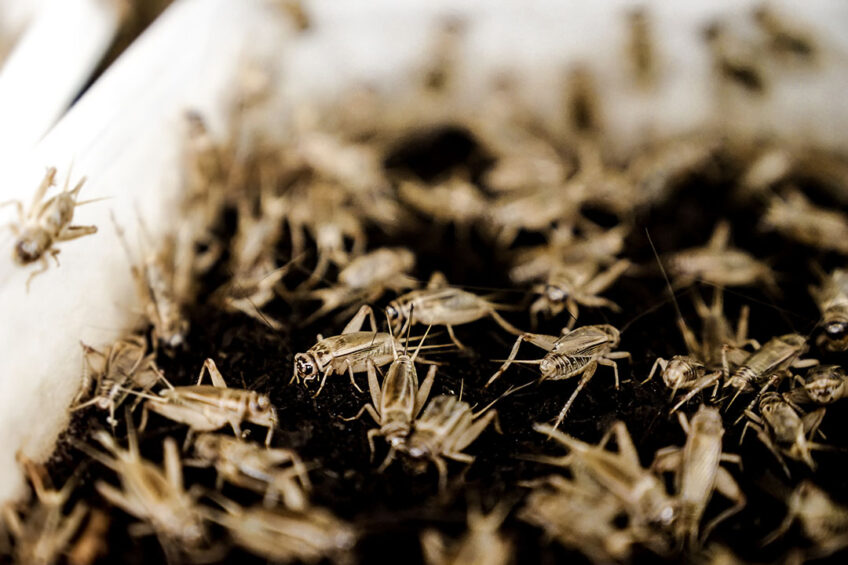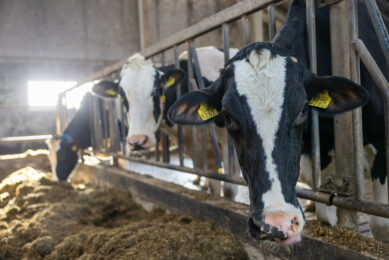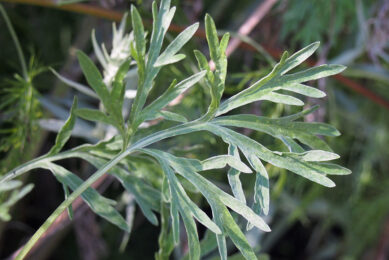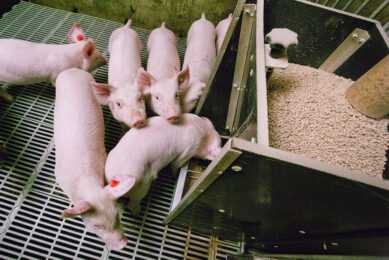New era for sustainable protein production

This year, the largest – and most advanced – cricket production plant in the world began ramping up operations, heralding in a new era of sustainable protein production for animal feed and more.
The majority of crickets produced at Aspire’s brand new 150,000 ft2 plant will be going to premium pet food companies, in whole and frozen form. Whole crickets and cricket protein powder are also used in livestock and aquaculture feeds and human food. In August, Lotte Confectionery of Korea became an exclusive distributor for Aspire Food Group products in that country.
The advanced technologies in the plant make it sustainable and very efficient, explains CEO Mohammed Ashour.
“We have engineered a vertical automated storage and retrieval system (ASRS) to handle 95,000 ‘totes’ in circulation at full production,” he says. “Some are breeder totes where the eggs are laid, and then 30,000 ‘pinheads’ – hatched eggs – are placed in growth totes with water, feed and a substrate. We will ramp up to full production by end of year. We are now testing the robotics. There are over 90 employees in the plant, many being trained up for plant operation. This sort of plant has never been built before, with the level of automation and sensors that we have developed that keep crickets healthy. We have developed IoT technology with a telecoms company and tied that into our AI system.”
Sustainable project
As an ingredient, insects are a very sustainable source of protein and fat for many reasons. They are very efficient feed converters, and in the case of black soldier fly larvae, they can eat food waste. Canadian firm Enterra is building a new plant near Calgary, Alberta where it will use food waste to grow Black Soldier fly (BSF) to further meet market demand in the pet food, poultry feed and wild bird feed sectors in North American and Europe. In the case of Aspire’s crickets (‘house crickets’ that are calm in large groups, thrive in low light and have an attractive nutritional profile), they are fed a modified chicken feed formula, mainly ground soybeans and corn.
The cricket waste, called frass, is sold by Aspire as a rich fertiliser and soil amendment. All substrates and by-products of Aspire’s production process are valorised, ensuring nothing is landfilled. The substrate in the bins, coco fibre, is composted.
When the plant moves to full capacity by the end of 2022, it will produce 20,000 metric tonnes of crickets and frass per year.
Funding, history and future
The plant construction was supported about € 769,000 from Sustainable Development Technology Canada in addition to several other government loans and grants as well as significant private equity and Aspire’s own substantial R&D investments. Ashour says no other company in the world has assembled a body of research that comes close to Aspire’s growing library on cricket production. Aspire has 176 independent inventions and 11 patents.
In 2013, the founders of Aspire won a Hult Prize.
In 2014, Aspire constructed a pilot plant to grow palm weevil larvae in Ghana with KNUST University. It is now a spin-off company called Legendary Foods Africa). Aspire began conducting R&D in Mexico while launching a pilot cricket production facility in Austin, Texas and built a plant/R&D facility there in 2017.
“We are very excited about ramping up our large-scale high-tech sustainable protein production to full-scale,” says Ashour. “We are thrilled to be doing something no one has ever done before.”






